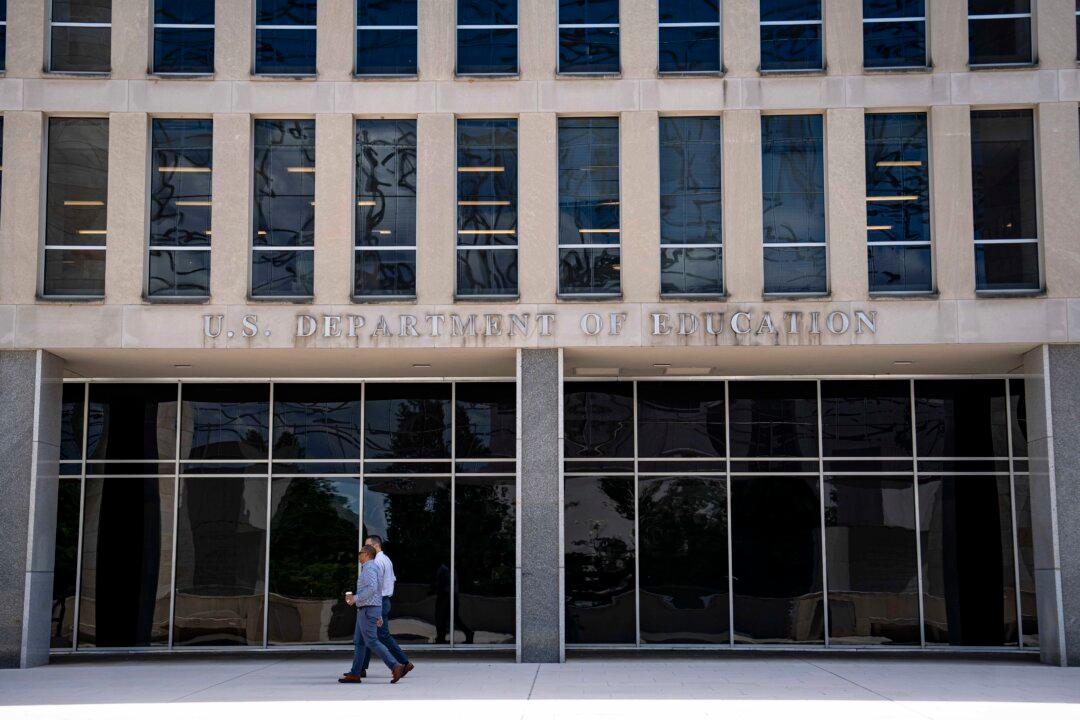So many charts from this period of our lives will amaze future historians. The one that stands out to me, about which I’ve seen very little commentary, is that which shows consumer spending on medical services taking a deep dive during a pandemic that everyone says was the worst in 100 years.
Would you suppose that the opposite would happen?
Here is a look at real personal consumption expenditures in health care services. They are not yet back to pre-pandemic levels.
![(Data: Federal Reserve Economic Data [FRED], St. Louis Fed; Chart: Jeffrey A. Tucker)](/_next/image?url=https%3A%2F%2Fimg.theepochtimes.com%2Fassets%2Fuploads%2F2022%2F06%2F03%2F1-JAT-2022.06.03-1200x375.png&w=1200&q=75)
How could this have happened? Many people were so afraid of covid that they would not get out to see a doctor, or leave their homes for any reason at all. They were also too alarmed at the chaos to go to the hospital unless absolutely necessary. There was also a scandalous use of coercion here. Fact: in mid-March every hospital in the country (unless there is one about which I’ve not heard) closed its doors to non-covid patients and some selected other purposes.
As a result, in most parts of the country, the hospital parking lots stood empty for months. Nurses made TikTok videos. Those were the lucky ones. Nurses from 300 institutions were furloughed from their jobs. Doctors did their best to do online visits but many others just sat at home with the painful knowledge that their patients were missing cancer screenings and other checkups.
Then you had the ventilator scandal in the early days, based on the presumption that this was the best way to deal with covid. It was a deadly practice. Once the word spread what they would do to you if you went in, people wisely started eschewing them completely.
Who gave the orders for these hospital shutdowns? What agency? Who was responsible? Why did so many comply? We need investigations of all these decisions because it was a complete disaster and we are still feeling the effects.
We were also alarmed to discover the extent to which medical services in the United States seem attentive to every need except those of the consumer and service provider. Government and Big Pharma seem to wield the highest influence over all decision making. If this was known by some before the pandemic, it is known by everyone today. This cartel needs somehow to be broken up. It’s urgent but it’s not clear precisely how this happens.
Earlier last year, someone sent me a letter written by a Pfizer executive to the FDA. It was the submission to get the FDA to grant its emergency use authorization for the covid vaccine. It included a P.S. with mention of a million-plus dollar wire transfer. It’s called a user fee, and these fund 45 percent of the regulator’s budget. That alone is suspect: talk about regulatory capture.
But that’s only the start of it. Pfizer received not only tax-paid subsidies to make the vaccine ($500M paid to its parent company in Germany) but also billions in direct purchases from governments. After six months, it became obvious that few people really wanted this product, so Pfizer goaded governments into mandating their consumption. When adverse effects were revealed to be vastly higher than expected, the companies could then fall back on the legal indemnification they held that protects against liability for injury. Finally, Pfizer is a private company so it can pocket not only revenue from sales but also the gains from its public stock offering!
The entire system is morally and economically indefensible. It’s not capitalism. It’s not socialism. It’s the worst of both systems, all wrapped into a gigantic mess of gritty graft and politicized pillaging, to the point that one can no longer distinguish what is an abuse of the system from the system itself. It is far from over too: daily the FDA and Biden administration are advertising these vaccines (the effectiveness of which wanes in months) for children at zero risk to covid. This is not ignorance at work; this is a system rife with corruption. Lies are the common currencies.
All the while, Americans are being robbed daily by the medical insurers, spending far more than they consume in services. The typical health insurance service costs $550 per month in this country, but the expense is mostly invisible to people because it is paid by the employer, at least in theory. In practice, this premium comes out of wages. And the plans are not good. Yes, you get a cheap doctor’s visit but any specialized care comes with very high deductibles. To mitigate against those costs, many employers offer health savings accounts. So you end up having to organize your financial planning around various buckets to avoid being robbed.
What most people would like is a plan that covers what we really need: not overpaying for services we don’t use but real insurance against something catastrophic. Those do not exist because Obamacare effectively made them illegal for regular health insurance providers. An individual entering this market will face an astonishing labyrinth of regulatory and industrial barriers, plus very high prices plus time delays and endless confusions.
You can discern the health of an industry by the efficiency of the delivery. I’ve never seen a health-insurance website that is up to modern standards. It is a backwards industry that operates like a cartel: expensive, bureaucratic, disregarding of the consumer, and heavily tied to government. It is obvious that the cold water of market competition would fix this but there are too many barriers even to get into the industry.
Most of the rest of the world believes that the United States has a private, market-based system of health-care delivery. That is only barely and superficially true. In reality, it is a protected cartel, both privileged and burdened by an impossible regulatory thicket plus subsidies plus mandates on business that shield most people from knowing the real costs they are paying as compared with the benefits they get.
This became very apparent during the pandemic, when the entire machinery somehow managed to go fully two years without much in the way of focus on the core thing you want in a pandemic: good access to early treatments. In major parts of the country, repurpose drugs were made unavailable even given evidence of their effectiveness. Even chain pharmacies played along for fear of the regulators, to the point of ignoring prescriptions issued by brave doctors who dared to try to save lives.
So the solutions seem obvious. Make medical services operate like any other service in the market. Put consumers in control. Let producers compete for loyalty. Let competition reign. Eliminate all mandates on business. Remove the mandates on insurers too and let them all offer minimalist plans that most healthy people need. Incentivize healthy habits by permitting insurers to reward people with lower premiums. De-corrupt the FDA. Let doctors be doctors again and let pharmacies serve the customer.
It’s easy to type the above but the difficulty of getting from here to there is overwhelming to contemplate. It’s a political problem for the upcoming Congress, one of a million. Maybe someone like Rand Paul can figure out a way to at least take steps in the right direction. Regardless, the pandemic exposed the crying need for reform. The current system is unsustainable, economically or morally. This is what we’ve learned. The real challenge is finding the path toward fixing it, while working within a system that seems hopelessly compromised by pressure-group payola.







